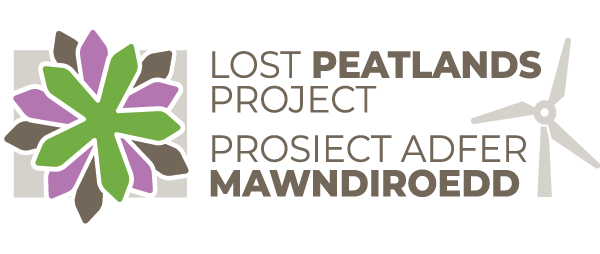Top 10 Species
Nightjar
Nightjar are a crepuscular species that are active at dusk and dawn and have a distinctive song which is easily recognisable. A trans-Saharan migrant, this species breeds in the UK in summer including in the Welsh uplands within the Lost Peatlands project area. Nightjar rely on their cryptic camouflaged plumage and eggs to reduce their predation risk and are an excellent indicator of healthy moth populations as this is their main food source.
Water Vole
Water voles have brown fur, a blunt nose, small ears, and a furry tail. Although more typically found in slow moving lowland watercourses, multiple upland populations have been discovered in and around the project areas including on Castell Nos HRA and Pen y Cymoedd windfarm. A hugely declined species with some reports suggesting a UK wide loss of 94%...we’re thrilled to be working on restorations which will protect and promote this species.
Sphagnum Moss
The ecosystem engineer for our peatland habitats, Sphagnum mosses hold water many times their own weight, form peat as they slowly decay and create the conditions needed for specialist species to colonise the peatlands. Sphagnum can vary visually between species and can be chunky, thin, red, green or ochre, and can form into hummocks or spread in wet hollows. All however, share a distinctive growth form with branches held in groups called fascicles around the central stem and a capitulum at the top end.
Round Leaved Sundew
One of 14 native carnivorous plants in the UK, the red leaves of the Drosera rotundifolia are covered in long glandular hairs, that attract insects which are then digested to provide important nutrients that sundews are not otherwise able to get. A firm favourite amongst many of the project staff and volunteers, finding this species in our peatland areas is always incredibly rewarding.
Cotton Grass
Easily recognisable when the white seed heads emerge, both common cotton grass and hare’s tail cotton grass are found at our peatland sites. Cotton grasses are actually sedges (not grasses!) and have a rich history of usage ranging from pillow stuffing to candle wick making. Widespread across the UK, this species is an excellent indicator that you’ll need to wear wellies on your walk.
Adder
The Adder has a dark 'zig-zag' stripe along its back with a row of dark spots along each side. Their colour varies from grey-white (primarily seen in males) to brown (in females) or even black (in melanistic individuals). They are the only snake found in the Arctic circle and within the Lost Peatlands project area the key habitat for them is our heathland and moorland. A beautiful snake that has undergone sharp decline through habitat loss and persecution, this species is in need of projects like ours to protect populations for the future.
Green Tiger Beetle
Iridescent green with light spots on their back, the green tiger beetle is instantly recognisable and fascinating to see. They are about 15mm long and incredibly fast on the ground but can also fly short distances. This beautiful species can be found on heathlands and grasslands throughout the project area, as well as on coal spoil habitats such as at Cwm Saerbren HRA and Cymmer Tip CWS.
Club Moss
Common in the carboniferous rainforests of 400 million years ago, clubmosses are actually more closely related to ferns than mosses. 3 of the seven British clubmoss species can be found in the Lost Peatlands project area: fir clubmoss; stags horn clubmoss; and alpine clubmoss. These species found refuge in forestry plantations from grazing and burning which damaged much of their typical habitats, and can be seen on tracksides throughout the project area.
Small Pearl Bordered Fritillary
This fritillary has numerous whitish pearls on the underside hind wings. The outer wings are bordered by black chevrons and have a large black central dot. As a caterpillar, it will feed on violets and as an adult it is a charismatic species found on rich acidic grasslands and heaths within our sites. A beautiful species often seen alongside dark green fritillaries in the summer skies…restoring and protecting the habitats within the sheltered valleys and cwms of the project area will ensure this species always has a stronghold in the South Wales valleys.
Bats
Bats are familiar to everyone as a charismatic species seen flitting across the sunset skies in search of food. The project has an important role to play for bats as bogs provide excellent breeding grounds for invertebrates which support our local bat populations. Across all project restoration sites, several bat species have been recorded with common and soprano pipistrelle present at all sites. Excitingly, other species such as noctule bats, myotis bats and rarer species such as lesser horseshoe have also been recorded.
